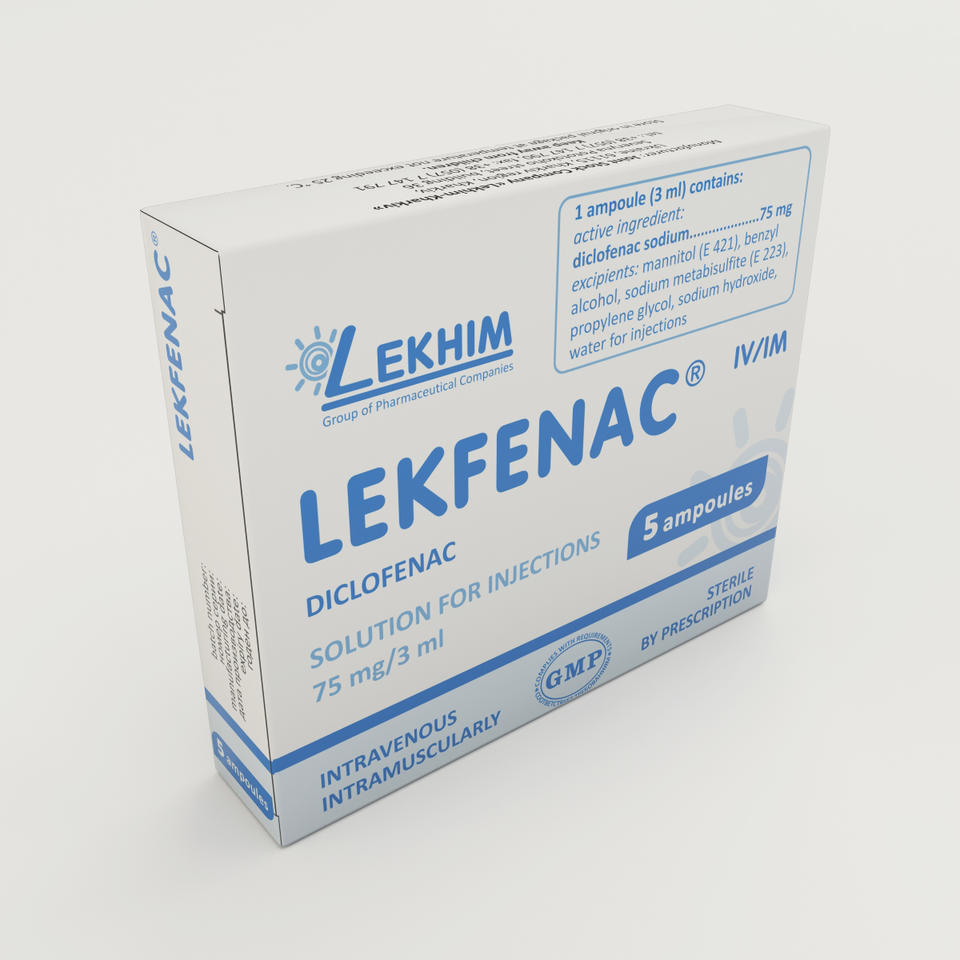
Lekfenac
General properties
Nonsteroidal anti-inflammatory and anti-rheumatic products. Acetic acid derivatives and related substances.
In intramuscular administration the product is used for the treatment of:
- inflammatory and degenerative forms of rheumatism, rheumatoid arthritis, ankylosing spondylitis, osteoarthritis, spondylitis, vertebral pain, extra-articular rheumatism;
- acute gout;
- renal and hepatic colic;
- pain and swelling after injuries and surgery;
- severe migraine.
When administered in intravenous infusion the product is used for treatment or prevention of post-operative pain.
Known hypersensitivity to the active substance, sodium bisulphite or any of the excipients.
History of gastrointestinal bleeding or perforation, relating to previous nonsteroidal anti-inflammatory drug (NSAID) therapy.
Active, or history of recurrent peptic ulcer/haemorrhage (two or more distinct episodes of proven ulceration or bleeding).
Last trimester of pregnancy.
Like other NSAIDs, diclofenac is also contraindicated in patients in whom attacks of asthma, angioedema, urticaria or acute rhinitis are precipitated by ibuprofen, acetylsalicylic acid or other nonsteroidal anti-inflammatory drugs.
Inflammatory bowel disease (e.g. Crohn’s disease or ulcerative colitis).
Hepatic impairment.
Renal impairment.
Congestive Heart Failure (NYHA II-IV).
High risk of postoperative bleeding, blood incoagulability, haemostasis disorders, hematopoietic disorders or cerebrovascular bleeding.
Treatment of peri-operative pain in coronary artery bypass grafting (or using cardiopulmonary bypass).
Coronary heart disease in patients with angina pectoris, myocardial infarction.
Cerebrovascular disease in patients with previous stroke or episodes of transient ischemic attacks.
Peripheral arterial diseases.
This dosage form is contraindicated in children.
For intravenous use only.
Concomitant NSAID or anticoagulant use (including low dose heparin).
History of haemorrhagic diathesis, a history of confirmed or suspected cerebrovascular bleeding.
Operations associated with a high risk of haemorrhage.
A history of bronchial asthma.
Moderate or severe renal impairment (serum creatinine >160 µmol/l).
Hypovolaemia or dehydration from any cause.
Pharmaceutical characteristics
Basic physical and chemical properties: colorless to pale yellow solution.
Store in original package at temperature not exceeding 25 °C.
Keep away from children.
